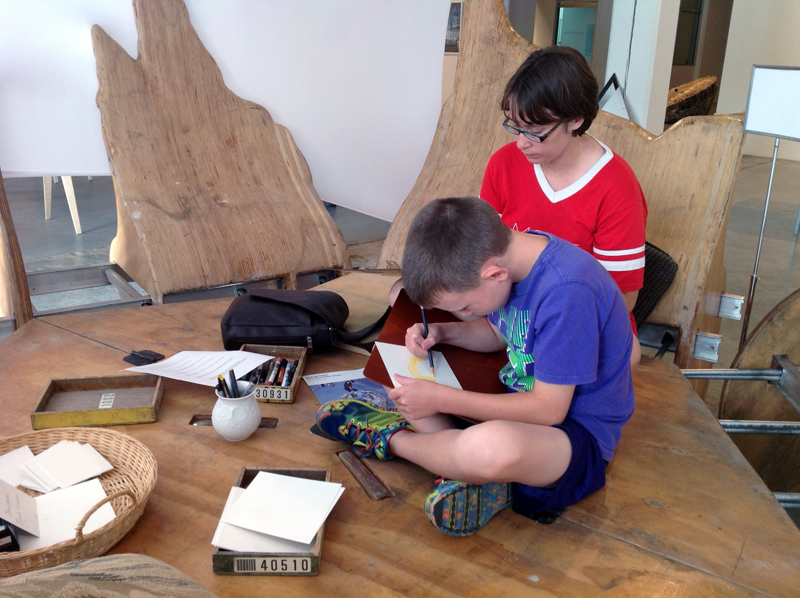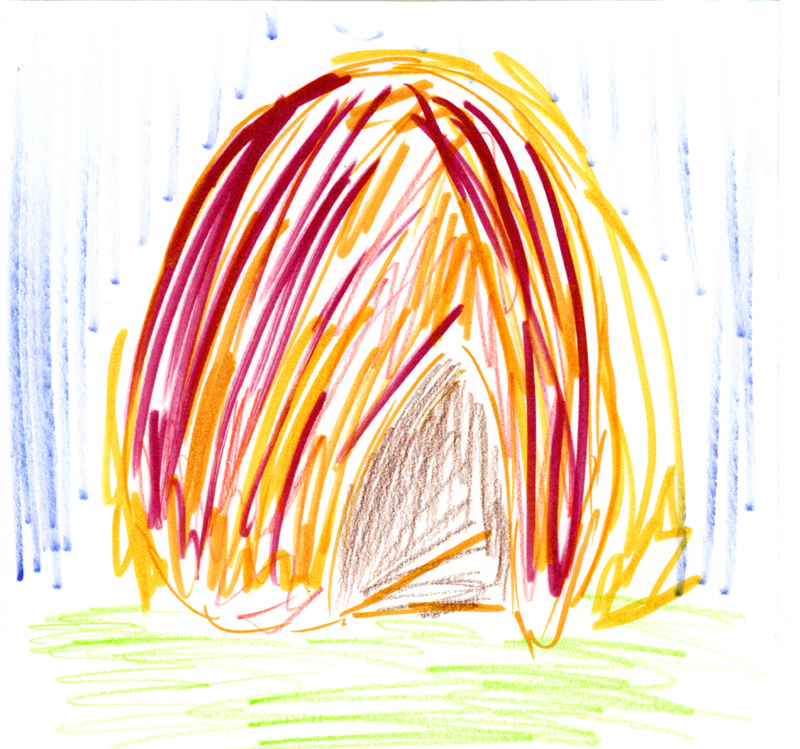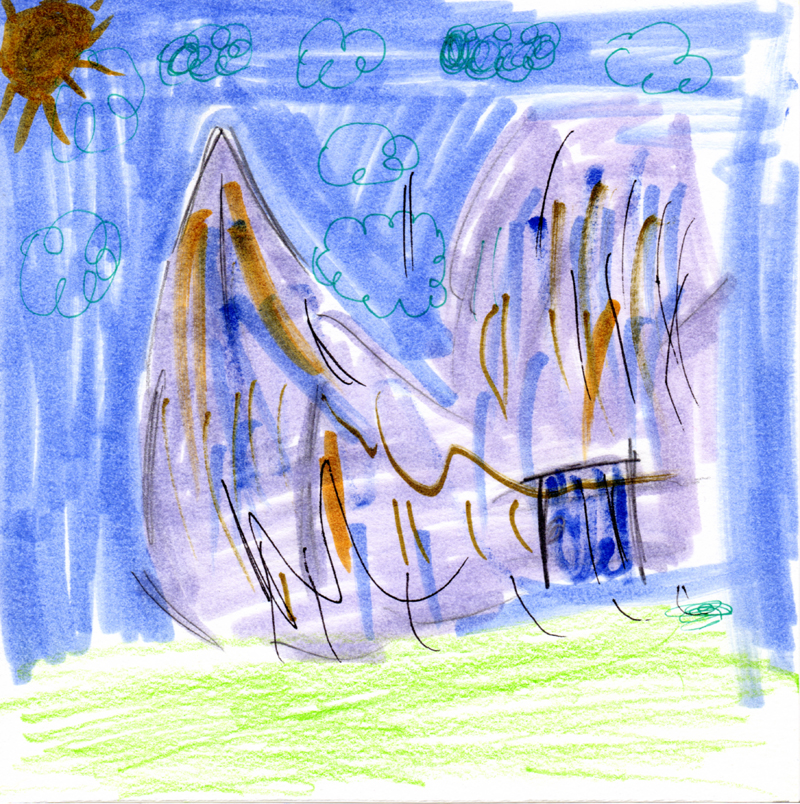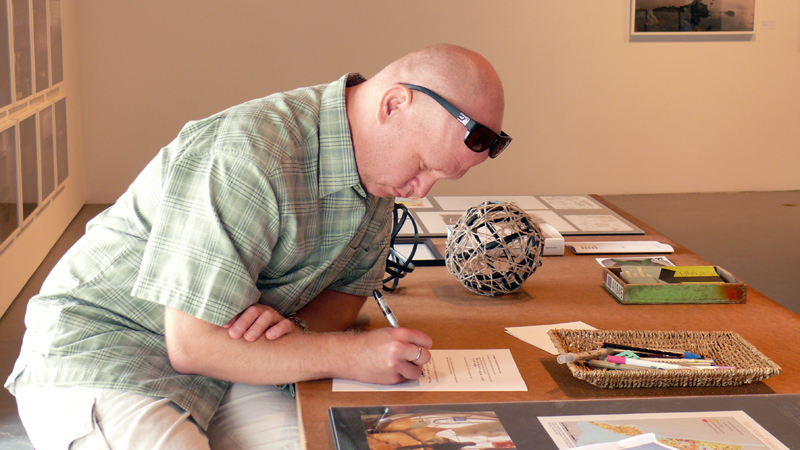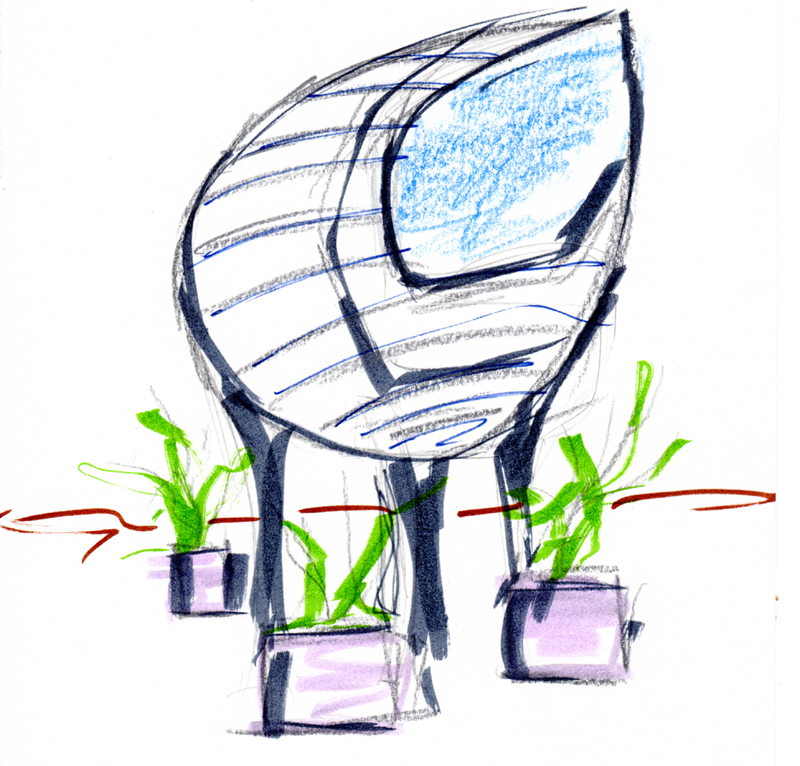Angie and Connor Hart entered the NYC Flock House to draw a Flock House and answer 7 questions. Angie wrote she found the Flock House “cozy, inviting, close.” Connor, 8 years old, said “No” to staying in the Flock House “because it looks dirty. Looks cold and has no door.” Angie said “Yes,” because it seems inviting & warm.” Yet, “spending the night – you would be vulnerable.
To equip the Flock House you “could collect rain water, solar power for energy and use a compost toilet.” Materials to use when building are “wood, tin, cloth.” To a design team Angie would bring “Interest.” She “Never built a structure before.”
They say “No” to a Flock House migration, “I think it would be mayhem. Too many people with too many ideas.” The role of Flock House in addressing population displacement is that, “Flock Houses could help in refugee camps and in areas where there are lack of resources.”
Keith Ballard, Kansas City, Missouri
Keith Ballard’s response to the Flock House is, “Freedom. Not being tied to a single place or restricted by a home mortgage.” When staying in a Flock House, “I’d want at least a week. To gain the full experience.” To be equipped the Flock House would need “portable cistern, compost toilet and a window garden.”
Building materials are “Plastic bags. they can be ironed together to create a thicker ‘fabric.’ Can be used as covering for the outside.” On a design team, he is a “good researcher.”
Keith would like to attend a Flock gathering. In population displacement, the Flock House would “Provide a sense of community.”

